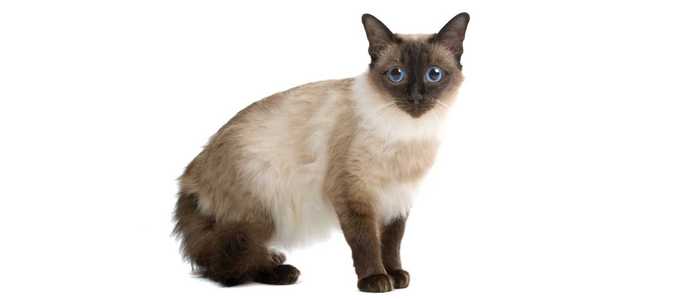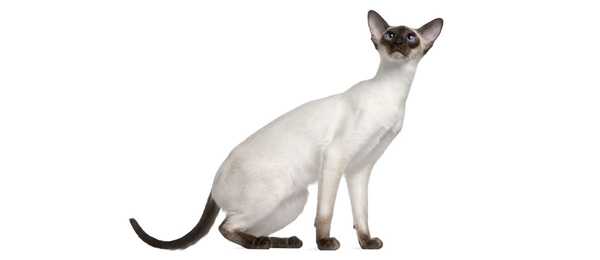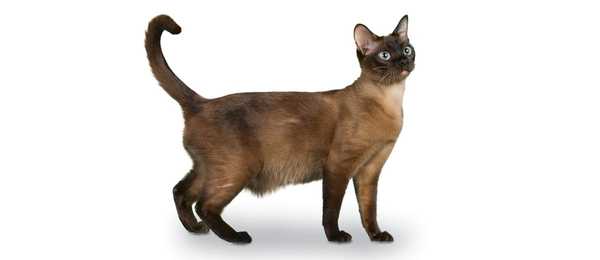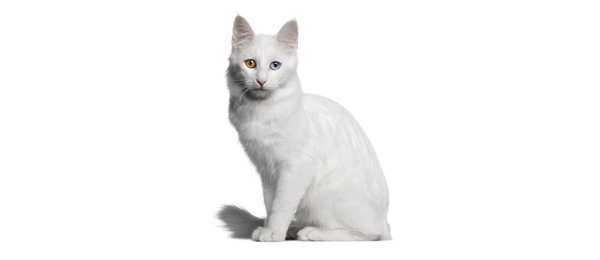
The Balinese is often a svelte cat with long tapering lines, very lithe but strong and muscular. The Balinese is unique with their distinct range of colors and silky coat that hides a supple and athletic body.
Playfulness
Activity Level
Friendliness to Other Pets
Friendliness to Children
Grooming Requirements
Vocality
Need for attention
Affection towards owners
Docility
Intelligence
Independence
Hardiness
Disclaimer: While the characteristics mentioned here may frequently represent this breed, cats are individuals whose personalities and appearances will vary. Please consult the adoption organization for details on a specific pet.
Personality
Since the Balinese and the Siamese are closely related, they share many traits. Like the Siamese, Balinese are curious, outgoing, intelligent cats with excellent communication skills. They are known for their chatty personalities and are always eager to tell you their views on life, love, and what you’ve served them for dinner. They often keep up a running monologue; they are not for those who think cats should be seen and not heard.
Balinese are often in tune with your moods and will be right there to cheer you up if you’re sad or to share your joy when you’re happy. Vocal themselves, they may respond to your tone of voice, and a scolding tone may hurt their sensitive feelings. A coaching tone and positive reinforcement are the only effective way for correcting unwanted behavior.
Balinese are agile and athletic, and if allowed will hitch a ride on the shoulder of any willing member of the family. They love to play and easily learn to fetch, bringing the ball or toy back for repeated throwing. They keep you entertained with their antics, but have a loving, devoted disposition as well. They can be quite assertive in their requests for attention, but also possess a special dignity particular to the Balinese and Siamese breeds.
Physical Attributes
Medium size. Graceful, long, and svelte; a combination of fine bones and firm muscles. Shoulders and hips continue same sleek lines of tubular body. Hips are generally not wider than shoulders. Abdomen tight.
History
In the early 1900s, longhaired kittens began appearing spontaneously in otherwise shorthaired Siamese litters. Some believe the recessive gene for long hair was introduced into the European Siamese gene pool after World War I. Since the Siamese was nearly obliterated during the war, other breeds and some mixed-breed domestic cats were used to revitalize the breed. The Turkish Angora, a breed with a silky semi-long fur similar to the Balinese coat, was thought to have been one of the breeds used.
Others believe that the recessive gene for long hair is simply a naturally occurring mutation. Both hypotheses have been disputed, and both have their reputable proponents, but no one really knows for sure. Regardless of how the long hair gene was acquired, the occasional longhair kittens were quietly given away.
In the 1940s, some people eventually thought these cats might be a good addition to the existing cat breeds. These longhaired cats began to be promoted and known as the Balinese. The Balinese name was intended to compare the cat’s graceful movements and flowing lines to those of the colorful dancers of Bali. In those early days, Balinese cats often had heavier boning and thicker coats than the Siamese.
By 1970, all major North American associations that existed at that time had accepted the Balinese. After the Balinese's recognition, a color variant of this breed, the Javanese who was created by mixing the Balinese with the Colorpoint Shorthair, began to be promoted. The Javanese combined the semi-long Balinese coat with the Colorpoint’s myriad of colors. The breed was named the Javanese after the Isle of Java, an island in Indonesia to the west of Bali. The Javanese isn’t from Java any more than the Balinese is from Bali, but it was believed that the name lent a nice romantic sound to the new breed.
On May 1, 2008, the Javanese officially became a color division of the Balinese, and in 2010 a single standard was adopted, fully combining the two breeds. In addition to sealpoint, chocolate point, blue point, and lilac point, the Balinese palette now includes twenty-two additional colors.




